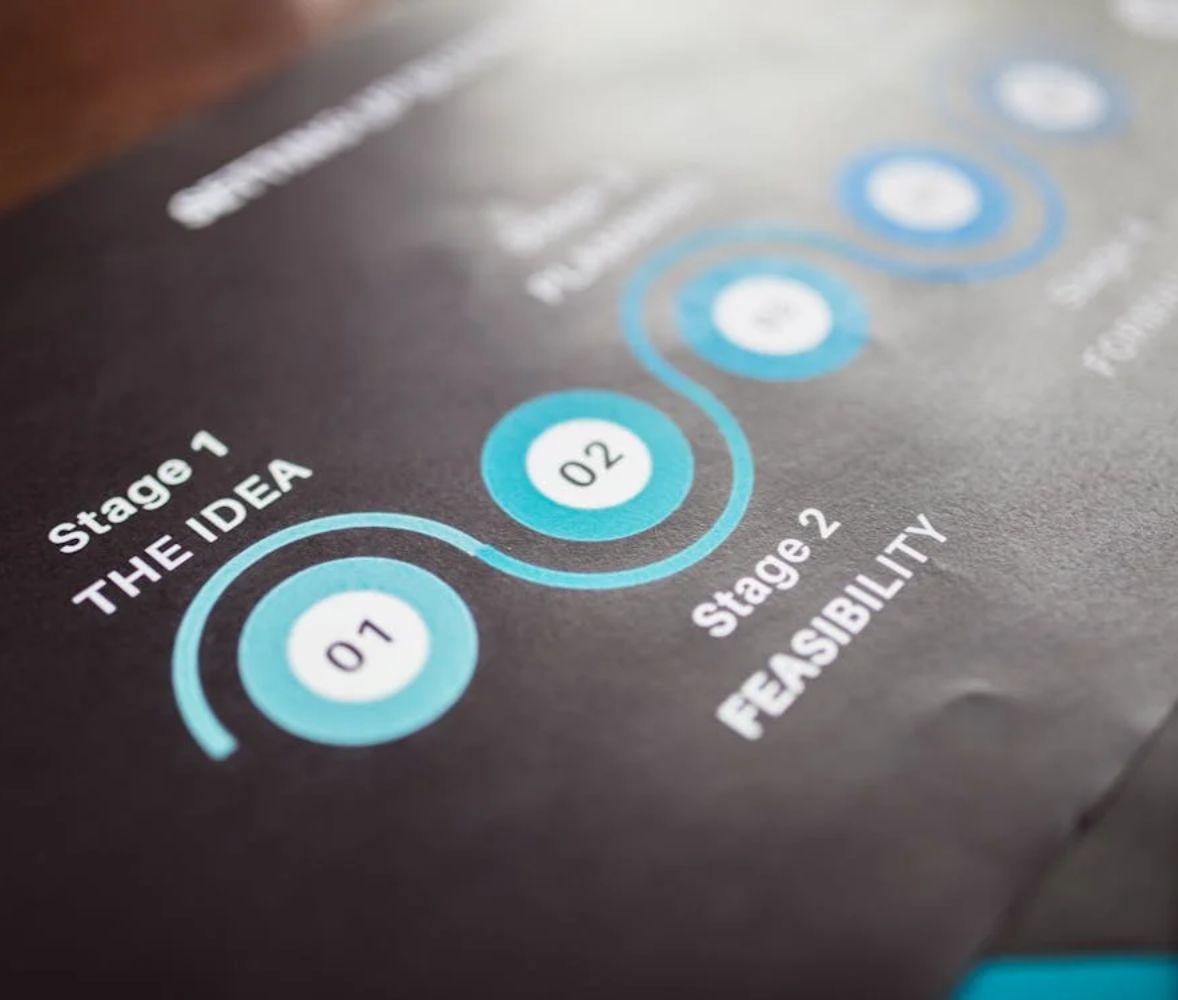

Software Development Workflow: Creating an Agile Project Management
Tips for Productivity Oct 12, 2024 • 8 min read
Words by -
You can say that a software development workflow is like a well-oiled machine, where each component plays a crucial role in the seamless delivery of a product. But what exactly constitutes a software development workflow?
In this article, we will tackle on what makes up a software development workflow, its importance in a project, and how Rubii can help you hire a software developer to help with software development project management.
What Makes up a Software Development Workflow?
A software development workflow is a structured series of steps that guide developers from the conception of an idea to its realization as a fully functional software product. This workflow typically involves stages such as:
- Requirement Analysis
- Design
- Development
- Testing
- Deployment
- Maintenance.
Each phase is essential to ensure that the final product meets the specified requirements and functions efficiently.

Requirement Analysis
This initial stage involves gathering and analyzing the needs and expectations of the end-users. Developers work closely with stakeholders to define the scope and functionalities of the software.
Design
In this phase, developers create the architecture of the software. They outline how different components will interact and plan the overall look and feel of the user interface.
Development
This is the core phase where developers write the actual code. They translate design documents into a working product, paying attention to detail to ensure the software operates smoothly.
Testing
Before deployment, the software undergoes rigorous testing to identify and fix any bugs or issues. This ensures the product is reliable and performs as expected under different conditions.
Deployment
Once tested, the software is deployed to the production environment where it becomes accessible to users.
Maintenance
Post-deployment, developers continue to monitor the software for any issues and make necessary updates and enhancements to ensure it remains relevant and efficient.
How does an Agile Methodology Enhance a Software Developer's Productivity?
Agile methodology is a dynamic approach to software development that emphasizes flexibility, collaboration, and customer satisfaction. It breaks down the development process into smaller, manageable cycles known as sprints, allowing teams to adapt quickly to changes and deliver incremental improvements.
- Increased Flexibility: Agile allows developers to adapt to changes in requirements even late in the development process, ensuring the final product aligns closely with user needs.
- Enhanced Collaboration: Agile promotes a collaborative environment where cross-functional teams work closely with stakeholders, fostering better communication and teamwork.
- Continuous Improvement: Through regular feedback and iterations, Agile encourages constant improvement of both the product and the development process.
- Faster Time to Market: By delivering software in incremental releases, Agile enables businesses to bring products to market faster, providing a competitive edge.
Use Case: Software Development Workflow with Agile Methodology

Let’s explore how a software development workflow is used in a web-based development project. Know who are the stakeholders in the project, the process of the workflow and its efficiency.
Stakeholders
- Product Owner: Represents stakeholders and end-users.
- Development Team: Composed of developers, designers, and testers.
- Scrum Master: Facilitates the Agile process and removes impediments.
Preconditions:
The initial stakeholder meetings have been conducted to gather requirements, and a project backlog has been created with prioritized user stories. This sets the foundation for a structured yet flexible development process.
Workflow Steps:
Requirement Analysis
Objective: Gather and refine requirements for the project management tool.
Activities:
- Conduct interviews and surveys with potential users.
- Create user personas and user stories to capture functional and non-functional requirements.
- Prioritize the backlog based on stakeholder input.
Design
Objective: Develop a high-level architecture and user interface design.
Activities:
- Create wireframes and prototypes to visualize the user interface.
- Define the system architecture, including database design and API interactions.
- Gather feedback from stakeholders on the design and iterate as necessary.
Development (Iterative Sprints)
Objective: Implement features in short, time-boxed iterations (sprints).
Activities:
- Plan sprint goals during sprint planning meetings.
- Developers work on user stories from the backlog, focusing on small, deliverable increments.
- Daily stand-up meetings facilitate communication and address any blockers.
Testing
Objective: Ensure that each increment meets quality standards before deployment.
Activities:
- Conduct unit tests, integration tests, and user acceptance testing (UAT) for features developed during the sprint.
- Address any bugs or issues identified in the testing phase.
- Involve stakeholders in UAT to gather feedback.
Deployment
Objective: Release the software to users.
Activities:
- Deploy the completed increment to the production environment.
- Monitor deployment for any immediate issues or user feedback.
- Document the release for future reference.
Maintenance
Objective: Ensure ongoing performance and relevance of the software.
Activities:
- Monitor the application for performance issues and user-reported bugs.
- Plan for regular updates and enhancements based on user feedback and changing requirements.
- Conduct retrospective meetings to evaluate the workflow process and identify areas for improvement.
Postconditions:
Now that the project management tool is live and accessible to users, with a system in place for gathering ongoing feedback. Additionally, the development team has identified lessons learned to enhance future sprints.
Benefits of Agile Methodology in This Workflow:
- Increased Flexibility: Adapts to evolving user requirements throughout the development cycle.
- Enhanced Collaboration: Encourages communication between the development team and stakeholders, ensuring alignment.
- Continuous Improvement: Iterative feedback loops help refine both the product and the development process.
- Faster Time to Market: Regular releases of functional increments allow for quicker user access and market responsiveness.
How Rubii Can Help Your Company to Hire Remote Software Developers

With the rise of remote work, finding the right talent for your software development needs can be challenging. Rubii offers a comprehensive suite of services designed to streamline the recruitment process for remote software developers.
Targeted Recruitment for Remote Jobs
Rubii excels at talent acquisition, pinpointing candidates who not only possess the necessary technical skills but also thrive in the unique environment of remote work. By honing in on specific criteria tailored for remote positions, Rubii ensures that each candidate is not just qualified but also aligned with the culture and dynamics of remote collaboration. This targeted approach minimizes the risk of mismatches, allowing organizations to build teams that are not only proficient but also adaptable and communicative—essential traits for success in a remote setting.
Advanced AI-Driven Sourcing Techniques
Harnessing the power of advanced AI, Rubii revolutionizes the recruitment process by accessing a vast, global talent pool. This cutting-edge technology meticulously analyzes candidate profiles, identifying those who meet your specific requirements with precision. By automating the sourcing process, Rubii not only saves time on the interview screening process and resources but also enhances the quality of candidates presented to you. This means that businesses can focus on what matters most—finding the perfect fit for their development needs—without getting bogged down in extensive screening processes.
Tailored Solutions for Remote Workforce Needs
Recognizing that every organization has its own set of challenges and goals, Rubii offers bespoke solutions tailored to the unique needs of each client. Whether you require specialized skills, a particular cultural fit, or adaptability to specific workflows, Rubii’s approach ensures that you receive candidates who are well-suited to your project requirements. This customization not only streamlines the recruitment process but also enhances team cohesion and overall project success, as the right developers seamlessly integrate into your existing structure.
Comprehensive Performance Management
To uphold high employee performance tracking standards, Rubii provides comprehensive performance management services designed to monitor and evaluate the productivity of remote developers. Through regular assessments and feedback mechanisms, Rubii ensures that developers not only meet but exceed expectations. This focus on performance helps identify areas for growth and improvement, fostering an environment of accountability and continuous development. As a result, businesses can be confident that their remote teams are operating at their best, driving projects forward effectively.
Onboarding
Rubii’s onboarding process is meticulously crafted to ensure that new remote hires are integrated smoothly into your team. This thorough approach familiarizes developers with your company's culture, values, and operational workflows, allowing them to hit the ground running. By investing time in a structured onboarding experience, Rubii helps reduce the time it takes for new hires to become productive, enhancing overall team performance and cohesion from the very start.
Dedicated Online Support
Understanding the challenges of remote collaboration, Rubii offers dedicated online support for both employers and developers. This ensures that any issues or concerns that arise are addressed promptly and effectively, facilitating smooth operations. Whether it’s technical difficulties, project clarifications, or interpersonal challenges, Rubii’s support system is there to provide guidance and solutions, fostering a productive and positive working environment.
Contract and Compliance Management
Navigating the intricacies of remote work contracts and compliance can often be overwhelming for businesses. Rubii takes the burden off your shoulders by expertly managing these complexities. They ensure that all legal requirements are met, including contracts, tax implications, and labor laws, allowing you to focus on your core business activities without the added stress. This comprehensive management not only mitigates risk but also promotes peace of mind, empowering you to concentrate on driving your projects forward.
By implementing Agile methodologies and leveraging Rubii's expertise, businesses can optimize their software development workflows, enhance productivity, and efficiently manage remote teams, ultimately driving success in today's competitive landscape.
Conclusion
A well-defined software development workflow is essential for transforming ideas into functional products. By integrating Agile methodologies, teams gain the flexibility to adapt to changing requirements, foster collaboration, and ensure continuous improvement. The outlined use case demonstrates how these principles can be effectively applied to real-world projects, leading to timely deliveries and satisfied stakeholders. Furthermore, as companies navigate the challenges of remote work, services like Rubii can provide invaluable support in sourcing and managing talent, ensuring that businesses can harness the full potential of their development teams. Embracing this structured approach, combined with the agility to respond to evolving needs, ultimately drives success in the competitive software landscape.
Ready to hire a software developer? Click here to get in touch!

